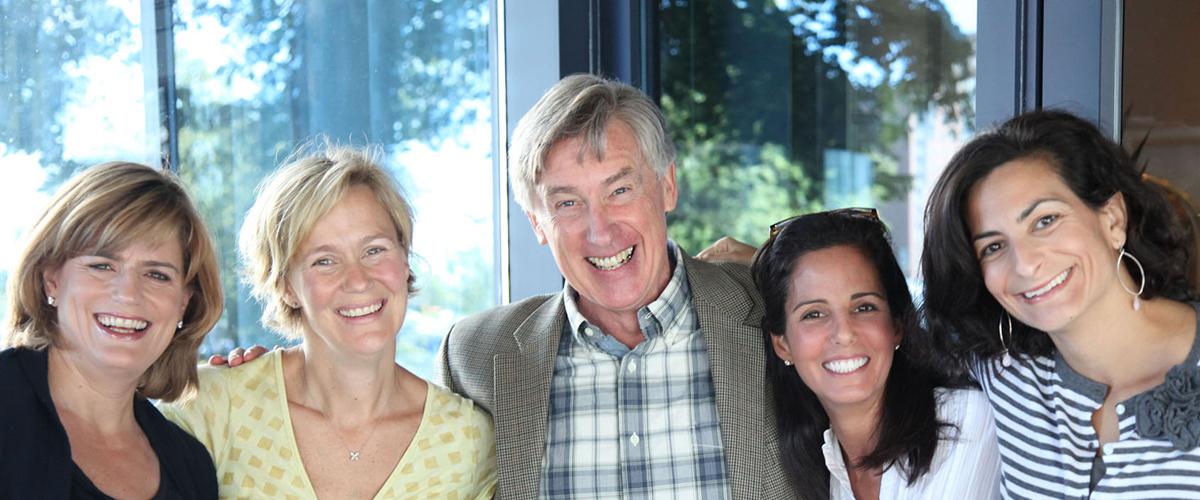One of the challenges faced by doctors treating patients with myotonic dystrophy type 1 (DM1)—and drug developers designing clinical trials—is the broad difference in the way the disease manifests itself and progresses from patient to patient. Dr. Guillaume Bassez, a neurologist, member of the MDF Scientific Advisory Committee and head of the Translational Myotonic Dystrophy Research Group at the Institut de Myologie in Paris, has worked to find ways to break the DM1 population into subgroups that might guide treatment decisions and bring more precision to care.
Some patients may be in the grips of the disease at birth, while others may not experience the onset of symptoms until their teens, as young adults, or older. While patients have long been characterized by the severity of their symptoms and the time of onset, doctors still do not have an agreed-upon ways of categorizing patients and using that to tailor care or design clinical trials.
Though Dr. Bassez described DM1 as a continuum, he said the question is whether there are meaningful ways to recognize differences between subgroups of patients within that continuum to better guide treatments and research. Using a national registry of 3,000 DM1 patients in France that he established, he and his colleagues conducted research to inform segmenting the population into two sub-groups, then three, then four. In the end, the team found statistical support for using five subgroups with distinct disease symptom differences based on the age of onset. They are: congenital (birth), infantile (up to 10), juvenile (10 to 20), adult (20-40), and late-onset adult (over 40).
“DM1 is not just a sequence of the same pattern. It’s a complex matrix or patterning,” he said. “Thanks to this registry, this kind of review could be conducted. Because of the large amounts of data, we are now able to refine the clinical phenotype of the diseases.”
It’s not the first time Dr. Bassez has sought ways to determine differences in the way disease the manifests itself and progresses in different portions of the DM1 population. Previous work showed to the surprise of many that the clinical manifestations of myotonic dystrophy (DM) in men and women were different. “We think that stratifying the disease is important for clinical studies and clinical trials,” he said.
The Power of a Registry
During last year’s 11th meeting of the International Myotonic Dystrophy Consortium (IDMC-11) in San Francisco, Dr. Bassez discussed both the case for using these subgroupings as a way to tailor care and develop new approaches to research, and also the patient registry he has developed and efforts to expand it beyond France.
Known as the International DM Standardized Registry, or DM Scope, it is being used to help researchers select and enroll patients in clinical trials. It is also used to create natural histories, validate outcome measures for use in clinical trials, and tease out correlations between patients’ genotype and phenotype.
For now, the registry is a collaboration between French and Canadian researchers who have been focusing on harmonizing their separate databases and standardizing the way data is gathered and recorded. They expect to include the participation of DM researchers in other countries to expand the reach of the registry in the future.
“It’s a powerful tool and an active project. Based on the success of the French-Canadian pilot, we will extend it internationally. We are doing a proof of concept with Canada to show it would be useful for designing clinical studies,” said Dr. Bassez. “We’ve received some interest from European colleagues, but we have to make it a success between France and Canada first.”
Treating Fatigue Without Drugs
At IDMC-11, Dr. Bassez discussed another area of work: He contributed to a four-country study, titled “OPTOMISTIC,” that looked at non-drug approaches to treating DM. This involved the use of cognitive behavior therapy and aerobic exercise as a way to address fatigue and related problems such as sleepiness and inactivity that DM patients experience. Today there is no approved drug for these symptoms.
The study, which took place in France, Germany, the Netherlands, and the United Kingdom, included 255 adult DM1 patients suffering from severe fatigue. In addition to tracking improvements in patients, the researchers sought to identify the most appropriate outcome measures and potential biomarkers that can serve as surrogate measures that correlate with observed clinical variations.
Dr. Bassez presented baseline outcome measures data from the study, which ran for ten months with a six-month follow up without therapy to see if the results are durable or if patients return to baseline over time. An article reporting the results of the OPTOMISTIC study was published in Lancet Neurology in June 2018.
Dr. Bassez, who co-organized IDMC-10 in Paris, said the growth of the IDMC conference reflects the progress that’s been made to understand DM and develop therapies. “There is a growing number of researchers, groups, and labs worldwide fighting the disease and increasing the hope of patients,” he said. “The first one in Paris had 80 people in a single room. There was nothing about therapy during IDMC-1. Now, 30 percent of the content is focused on therapies.”

